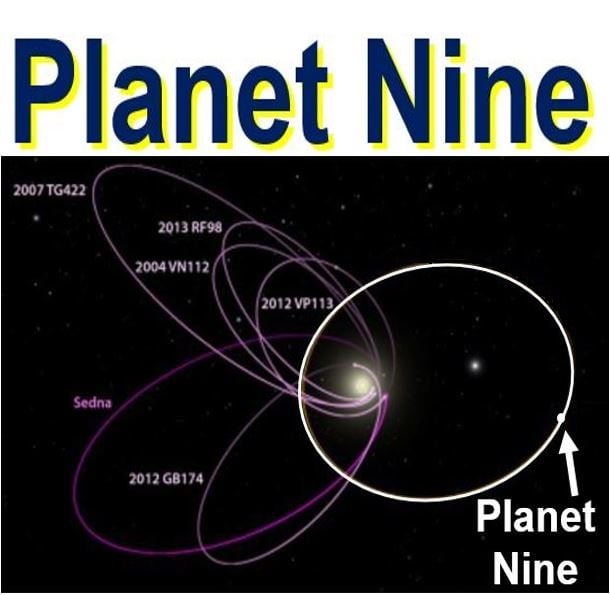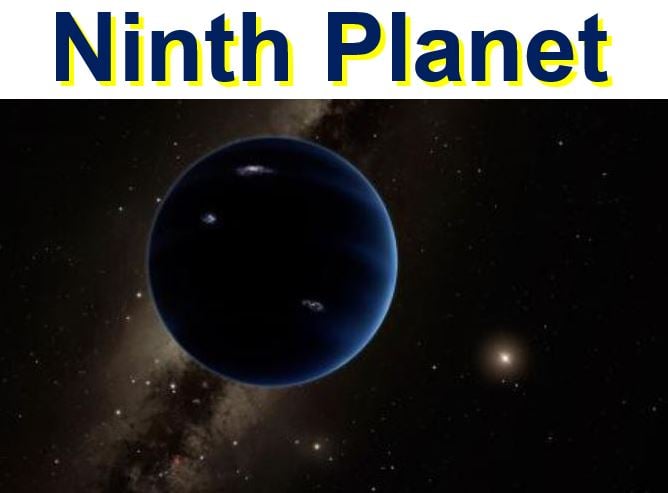The existence of Planet Nine in the far outer edges of our Solar System is becoming more likely as new evidence has emerged, says a researcher from the California Institute of Technology.
In January this year, Mike Brown and Konstantin Batygin reported in the Astronomical Journal that a ninth planet, with a mass ten times that of the Earth and about four times its size, had been discovered.
This planet, called uo3L91, so new it does not even have an official catalogue name, has the astronomical community in a buzz. It is so distant from the Sun that it probably takes from 10,000 to 20,000 years to complete an orbit.
 One year on Planet Nine could take up to 20,000 Earth years to complete. This image contains the 6 most distant known objects in our solar system with orbits exclusively beyond Neptune. They all amazingly line up in a single direction. (Image: Caltech/R. Hurt)
One year on Planet Nine could take up to 20,000 Earth years to complete. This image contains the 6 most distant known objects in our solar system with orbits exclusively beyond Neptune. They all amazingly line up in a single direction. (Image: Caltech/R. Hurt)
Planet Nine far from the Sun
Planet Nine, if it does exist – the researchers findings need to be confirmed – orbits about twenty times farther from our Sun than Neptune, which has an average distance of 2.8 billion miles.
Prof. Brown says he has gathered more evidence that Planet Nine really is out there (probably), lurking in the far reaches of our Solar System.
He says he has tracked another object in the *Kuiper Belt that is also moving in an unusual manner. Its abnormal movement is exactly what one would expect if Planet Nine is real, he added.
 This artistic impression of Planet Nine with a distant Sun in the background. The planet is thought to be gaseous, similar to Uranus and Neptune. Hypothetical lightning lights up the night side. (Image: Caltech/R. Hurt)
This artistic impression of Planet Nine with a distant Sun in the background. The planet is thought to be gaseous, similar to Uranus and Neptune. Hypothetical lightning lights up the night side. (Image: Caltech/R. Hurt)
* The Kuiper Belt is a region in the outer reaches of our Solar System, beyond the orbit of Neptune (the furthest planet from the Sun), believed to contain many asteroids, comets, and other small bodies made mainly of ice.
New claims yet to be confirmed
None of his new claims has yet been published in a peer-review scientific journal or checked by other researchers.
The Canada–France–Hawaii Telescope, located near the summit of Mauna Kea mountain, is currently conducting the Outer Solar System Origins Survey, searching far into our Solar System, and so will be able to check Prof. Brown’s claims as more Kuiper Belt objects are discovered.
Even though there is not yet an official discovery of Planet Nine. Prof. Brown argues that the new object reduces the likelihood of a mathematical error to about 0.001%.
Regarding this potential discovery, Prof. Brown, the Richard and Barbara Rosenberg Professor of Planetary Astronomy, said:
“This would be a real ninth planet. There have only been two true planets discovered since ancient times, and this would be a third. It’s a pretty substantial chunk of our solar system that’s still out there to be found, which is pretty exciting.”
 We could soon have Planet Nine added to our solar system. If confirmed, it will be the furthest planet from the Sun. (Image: Adapted from Wikipedia)
We could soon have Planet Nine added to our solar system. If confirmed, it will be the furthest planet from the Sun. (Image: Adapted from Wikipedia)
Planet Nine’s gravity appears to dominate its neighbourhood of the Solar System. Its gravity, in fact, dominates a larger region than any of the other known planets, a fact that makes it “the most planet-y of the planets in the whole solar system,” Prof. Brown said.
Its presence helps answer many questions regarding the enigmatic features of the Kuiper Belt.
Video – Evidence of Planet Nine
Caltech’s Professors Konstantin Batygin and Mike Brown discuss new research that provides evidence of a giant planet tracing a bizarre, highly elongated orbit in the outer solar system.
